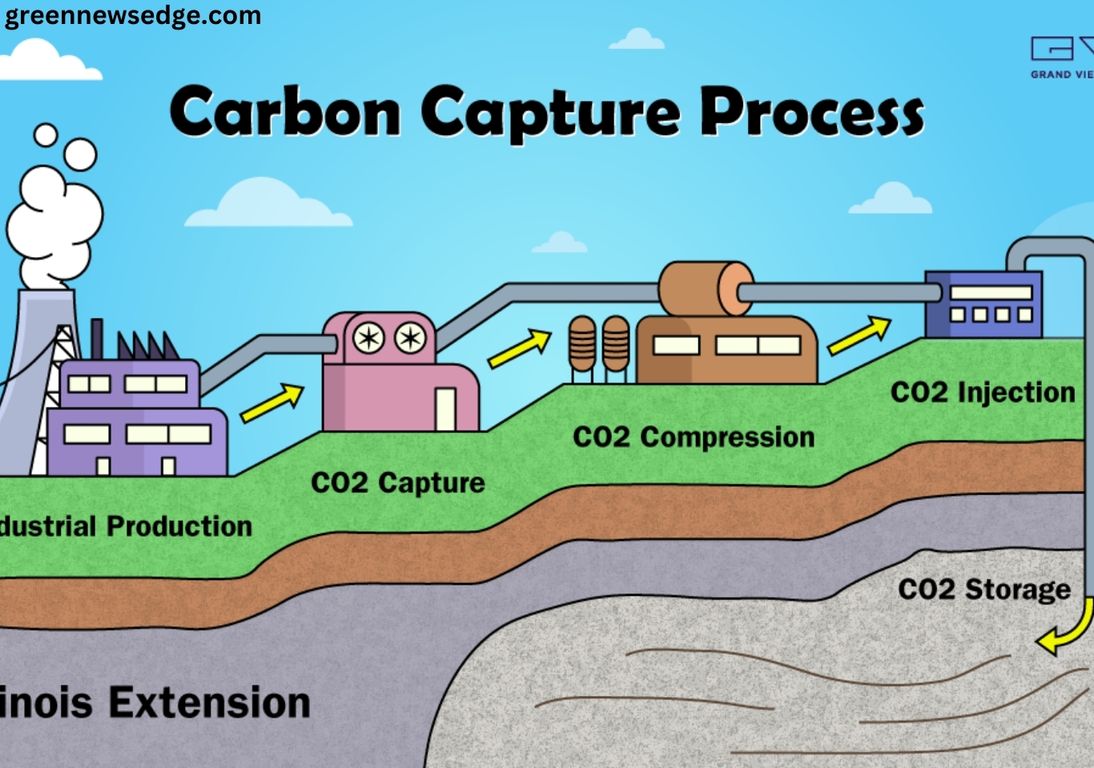A Member of Parliament (MP) has urged the government to abandon its reactive, short-term approach to energy projects, comparing it to a “whack-a-mole” strategy. The MP criticized the inconsistent planning and frequent policy shifts, arguing that such an approach creates uncertainty for investors and delays the transition to a stable and sustainable energy system. Instead of addressing issues as they arise, the MP emphasized the need for a long-term, strategic framework that ensures energy security, promotes innovation, and supports economic growth.
The call for change comes amid growing concerns about the effectiveness of current energy policies in meeting national and environmental goals. The MP highlighted that frequent shifts in regulations and priorities disrupt the industry, leading to inefficiencies and missed opportunities for renewable energy expansion. A well-structured and forward-thinking plan, the MP argued, would provide clarity, attract investment, and accelerate the shift toward cleaner energy solutions. By ending the unpredictable “whack-a-mole” approach, policymakers can create a more resilient and future-proof energy sector that balances economic and environmental priorities.
MP Criticizes Lack of Coordination in Suffolk’s Energy Projects
An MP has called for an end to what she described as a disorganized, “whack-a-mole” approach to energy projects in the East of England.
Jenny Riddell-Carpenter, Labour MP for Suffolk Coastal, criticized the lack of leadership in managing major infrastructure developments along Suffolk’s coast. She argued that the absence of a coordinated strategy has resulted in project applications being drafted without adequately considering community interests.
The region is set to host several large-scale energy projects, including the Sizewell C nuclear power station, offshore wind farm infrastructure, and National Grid developments.
In response, a government spokesperson stated that reforms are underway to improve the planning system, ensuring a more strategic and efficient approach to future energy projects.
MP Criticizes Lack of Leadership in Suffolk’s Energy Planning
Speaking on BBC Radio Suffolk, Jenny Riddell-Carpenter highlighted the critical role of Suffolk’s coastline in the UK’s energy infrastructure, stating that 30% of the nation’s energy is either generated or transported through the region. She emphasized the scale of planned and ongoing projects, which include significant developments in nuclear and renewable energy.
She pointed out that both the Sizewell C nuclear power station and ScottishPower Renewables’ offshore wind farms received approval in 2022 under the Conservative government. However, she criticized the absence of strong leadership, arguing that it allowed various organizations to step in and dictate project placement without a clear, coordinated strategy. Describing the situation as a “whack-a-mole” approach, she said energy developers were left to manage the process independently, resulting in a fragmented and unsystematic rollout of infrastructure.
As an example, she cited the Nautilus project, which proposed an undersea cable linking Belgium and the UK. Initially, Suffolk’s coast was considered as the cable’s landfall site, but National Grid later shifted the location to Kent without warning. She condemned such unpredictable decision-making, stating that policy should be developed through a structured, strategic framework rather than abrupt changes that create uncertainty for communities and investors alike.
MP Calls for Strategic Leadership in Suffolk’s Energy Infrastructure
Speaking on BBC Radio Suffolk, Jenny Riddell-Carpenter underscored the pivotal role of Suffolk’s coastline in the UK’s energy network, noting that 30% of the nation’s energy is either produced or transported through the region. She highlighted the scale of ongoing and proposed developments, including major investments in nuclear and renewable energy infrastructure.
She pointed out that the Sizewell C nuclear power station and ScottishPower Renewables’ offshore wind farms were both approved in 2022 under the Conservative government. However, she criticized the lack of strategic oversight, arguing that this leadership gap allowed various organizations to dictate project locations without a cohesive plan. She described the situation as a “whack-a-mole” approach, where energy developers were left to manage infrastructure deployment independently, leading to a disjointed and inefficient expansion.
As an example, she cited the Nautilus project, which initially proposed an undersea cable connecting Belgium and the UK with a landfall site in Suffolk. However, National Grid later shifted the project to Kent without prior warning. She condemned this lack of consistency, stressing that energy policy should be guided by a structured, long-term vision rather than abrupt, reactive decisions that create uncertainty for both communities and investors.
Energy Firms and Government Emphasize Coordination and Strategic Planning
Julia Pyke, joint managing director of Sizewell C, emphasized the significant economic benefits that low-carbon energy projects can bring to the region, including job creation, investment, and economic growth. However, she stressed the importance of coordination between projects, stating that infrastructure development in Suffolk must set a higher standard for efficiency and integration. She noted that Sizewell C is actively collaborating with local projects and councils to share information and improve planning, thereby minimizing disruption to local communities.
A spokesperson for ScottishPower Renewables reaffirmed the company’s commitment to responsible and considerate development. They highlighted that the fully approved East Anglia offshore wind farm projects represent multi-billion-pound investments. The company prioritizes reducing environmental and community impact, citing its approach of installing cable route ducting for one wind farm during the construction of another as an example of efficient infrastructure planning.
Meanwhile, a spokesperson for the Department for Energy Security and Net Zero underscored the need for a cost-effective approach to energy infrastructure. They emphasized that strengthening the grid is essential for delivering renewable electricity efficiently while protecting consumers from volatile fossil fuel markets. The department reiterated its commitment to planning system reforms aimed at fostering a more strategic and coordinated approach to new energy developments.
Frequently Asked Questions(FAQ’s)
What concerns has MP Jenny Riddell-Carpenter raised about energy projects in Suffolk?
MP Jenny Riddell-Carpenter has criticized the lack of leadership and strategic planning in Suffolk’s energy projects. She described the current approach as a “whack-a-mole” strategy, where energy developers manage projects independently without proper coordination, leading to fragmented infrastructure development.
Why is Suffolk’s coastline important for the UK’s energy sector?
Suffolk’s coastline plays a crucial role in the UK’s energy infrastructure, with 30% of the nation’s energy either generated or transported through the region. The area is home to key projects, including the Sizewell C nuclear power station and offshore wind farms, making it a vital hub for clean energy production.
What is the Nautilus project, and why is it controversial?
The Nautilus project is an undersea cable proposal designed to connect Belgium and the UK. Initially, Suffolk was considered for the cable’s landfall, but National Grid later relocated the project to Kent without prior consultation. MP Riddell-Carpenter criticized this sudden change, calling for more structured and transparent energy policy decisions.
How are energy companies addressing concerns about infrastructure coordination?
Julia Pyke, joint managing director of Sizewell C, has emphasized collaboration between projects, local authorities, and councils to improve coordination and reduce the impact on local communities. ScottishPower Renewables has also highlighted its commitment to minimizing disruptions by integrating infrastructure planning, such as installing cable routes for multiple projects simultaneously.
What is the government doing to improve energy project planning?
The Department for Energy Security and Net Zero has stated that it is reforming the planning system to ensure a more strategic and cost-effective approach to energy infrastructure. The goal is to streamline renewable electricity integration into the grid while protecting consumers from unstable fossil fuel markets.
How do these energy projects benefit local communities?
Energy developments in Suffolk offer significant economic benefits, including job creation, investment, and long-term regional growth. Additionally, improved coordination among projects can help minimize environmental and community disruption while enhancing infrastructure efficiency.
What is the “whack-a-mole” strategy mentioned by MP Riddell-Carpenter?
The “whack-a-mole” strategy refers to the uncoordinated and reactive approach to energy project planning, where developments occur without a clear, long-term strategy. MP Riddell-Carpenter argues that this has led to fragmented infrastructure, lack of community consideration, and uncertainty in project execution.
What major energy projects are currently planned or underway in Suffolk?
Key energy projects in Suffolk include the Sizewell C nuclear power station, Scottish Power Renewables’ offshore wind farms, and National Grid infrastructure developments. These projects aim to support the UK’s transition to clean energy and strengthen the national grid.
Conclusion
The future of Suffolk’s energy infrastructure is at a critical crossroads, with significant projects poised to shape the region’s role in the UK’s clean energy transition. However, concerns over the lack of strategic coordination and leadership have highlighted the need for a more structured approach to planning and development. MP Jenny Riddell-Carpenter’s call for reform underscores the urgency of ensuring that energy projects are not only efficient but also considerate of local communities and long-term sustainability.
While industry leaders and government officials acknowledge the challenges, their commitment to improving planning processes and minimizing disruptions is crucial for balancing economic growth with environmental responsibility. By fostering greater collaboration among stakeholders, streamlining approval processes, and prioritizing transparency, Suffolk can become a model for well-integrated, forward-thinking energy infrastructure. Moving forward, a cohesive and strategic approach will be essential to securing Britain’s clean energy future while delivering lasting benefits to the region.







